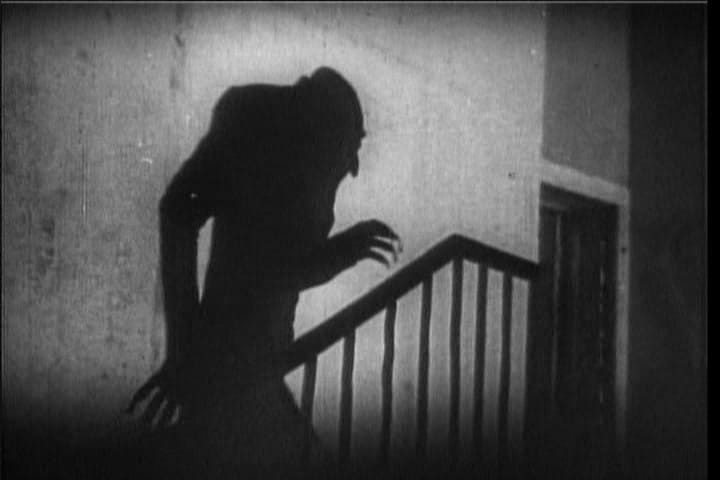Over one hundred years since its first screening, F.W. Murnau’s Nosferatu: A Symphony of Horror (1922) is not as terrifying as it once was, yet it retains a timeless eeriness. Max Schreck’s career-defining performance as Nosferatu inspired remakes, heightened public interest in the Dracula/Nosferatu story, and cemented itself as a pivotal film of German Expressionism. As The Count rises from his coffin, he ascends into a new genre – ‘horror’ – with all its repulsive, inhuman promise.
Werner Herzog’s remake, Nosferatu the Vampyre (1979), continues to innovate. Klaus Kinski’s performance is a perfect subversion of the Nosferatu character – pathetic, depressed, and driven by a genuine desire for human connection. He is chilling not because he represents that lurking ‘Other’, but because he feels familiar, relatable even.
Herzog also adds material in the third act illustrating Nosferatu’s devastating impact on the town of Wisborg, accentuating the macabre horror for modern audiences. Rats swarm the town in silent, one-shot tableaus as townspeople form makeshift communities in full knowledge of the impending plague.
The classic tragedy of Nosferatu/Dracula’s conclusion is navigated perfectly by Isabelle Adjani’s Mina, who, in her final moments, is completely and utterly alone. In a subversion of the common ‘damsel in distress’ trope, Adjani cements herself as the determined hero of the film.
Robert Eggers’ 2024 remake treads a line between tradition and imagination. Considering Eggers’ reputation as one of the most innovative filmmakers working today, there was great potential here for a special kind of heightened storytelling. He tries to foreground genuine horror and grit, and thereby, like Herzog in 1979, provide something original and exciting.
But what might have been cutting edge instead folded into convention. The cinematography was disappointingly uniform, every shot as foggy, dark, and glacial as the next, leaving little space for the beautiful mise-en-scéne of other Eggers films. There’s also grounds to critique the film for over-stylising. Eggers’ signature close-up shots in particular are overused. In such a gloomy film, obvious stylisation undermines the realism so essential to horror’s chill.
The performances, too, are flawed. Lily Rose-Depp gives a good physical performance, but in sum appears wooden and miscast. The other actors are also forgettable: an especial shame given the caliber of the cast. Simon McBurney’s performance as Knock, although small, was a lively exception.
But these issues of casting and cinematography are not the main cause for disappointment with Nosferatu. Its greatest problem is the lack of innovation of a classic tale.
The Nosferatu story is too well-known to justify an identical remake. Like Herzog’s version, remakes need to say something new. And, sadly, Eggers’ film feels like something we’ve seen before. The minor changes that are made (like a naked Nosferatu – the real horror of the film?) do little to reimagine the conventional narrative.
Watching the three films in close succession highlights just how one-dimensional the 2024 Nosferatu is. Compared to the impact of Murnau’s Nosferatu (1922), or the dark twists of Herzog’s Nosferatu the Vampyre (1979), Eggers’ timid approach made for a frustrating cinematic experience.


